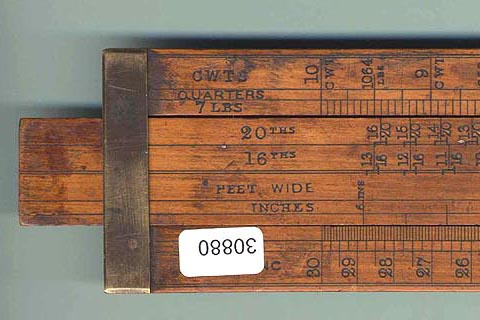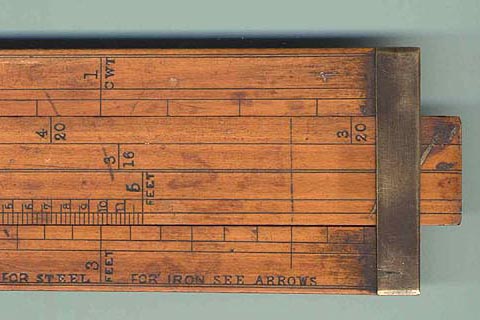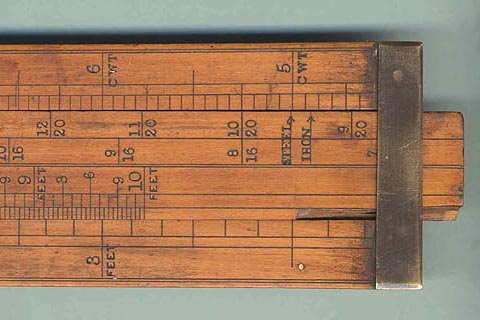Aston & Mander

Aston Side 1

Aston Side 2
 Side 1 Left |
 Side 1 Right |
||||||||||||||||||||||||||||||||||||
 Side 2 Left |
 Side 2 Right |
||||||||||||||||||||||||||||||||||||
|
This rule is marked as ASTON & MANDER (1917) LTD LONDON and is made for calculating the weight of a steel sheet. The operation is simple. Align the length of a sheet of steel on LONG scale at the bottom with the width on WIDE scale on slide. Read the weight (in CWT) on top scale on opposite side of the thickness scale (either in 1/20 or 1/16 inch gradation.) There is a pair of gauge marks on each side for converting the weight for an iron sheet.
The unit of weight CWT is "hundred weight" and equal to 112 pounds in Great Britain. (Exactly 100 pounds in US.) 20 CWT equals 1 Ton (=2,240Lb) and is almost the same with a metric Ton. |
|||||||||||||||||||||||||||||||||||||